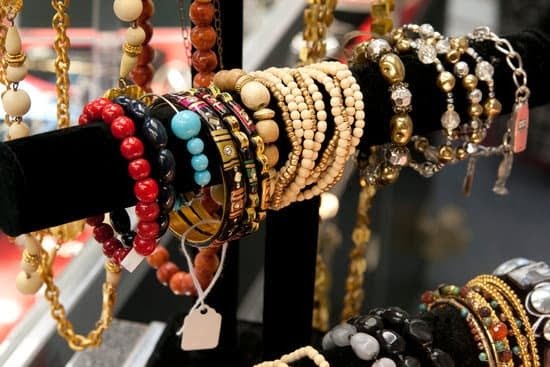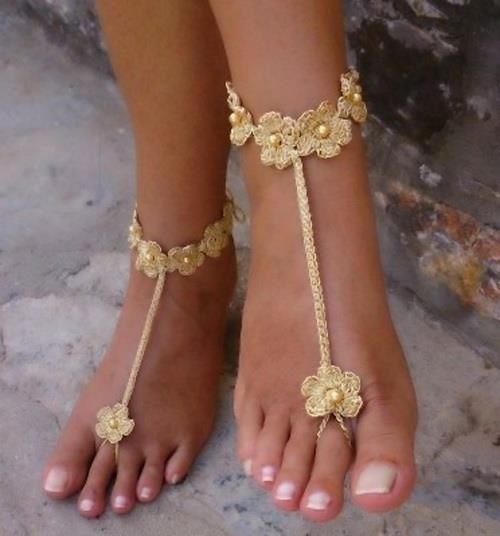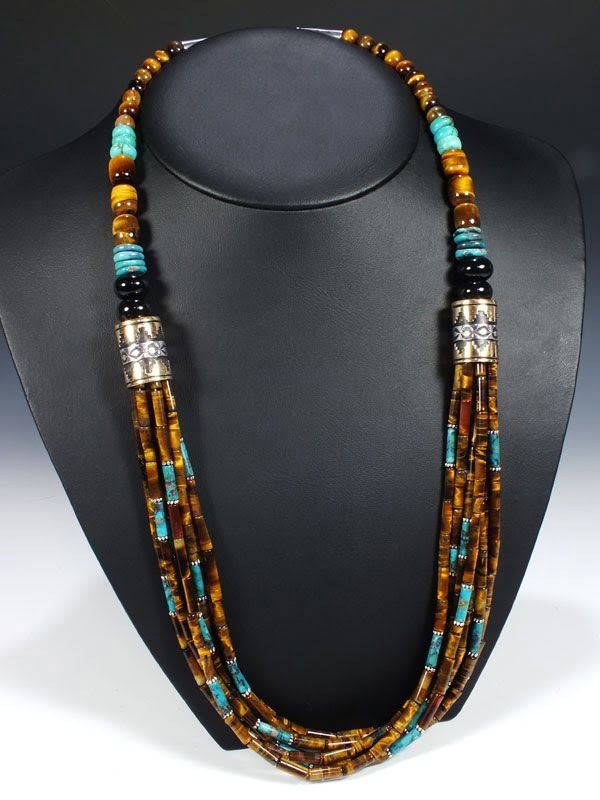Introduction
Horn jewelry has become a popular accessory in recent years. It is often used to make necklaces, rings, and earrings. Some cultures even believe that horn pieces possess spiritual or symbolic properties. To truly appreciate the history of horn jewelry and its meaning, it is important to understand how it is made.
Process: Horn Jewelry Crafting Step-by-Step
The process for crafting horn jewelry starts with selecting a piece of naturally shed or hunted material that still contains most of the original shape and size. Horns can come from various animals, such as cows, bison, goats, elk, antelope, wild boar, sheep and more. As such there are vast differences in the shapes and sizes of horns post harvesting. Once a suitable piece has been chosen, it is cut down to a usable length and cleaned thoroughly using natural oils or products like mild soap with warm water.
In order to create desired pieces with intricately curved edges many horn makers use heat torches to help them shape their jewelry resulting in intricate designs that would be difficult otherwise achieved by hand only (sculpting). To protect the horns from charring from high Temperature exposure they also coat them with several layers of wax first then begin the sculpting process. After achieving the intended result makers apply finishes such as stains , dyes or polishing for specific needs .If metallic components like ribbons or chain links are desired these are usually added at last stage . The end product will be ready for people to wear after being carefully inspected for safety and quality assurance .
Conclusion: Symbolism Behind Horn Jewelry
The symbolism behind this type of jewelry varies greatly among cultural groups. For some cultures, wearing horn jewelry is said to bring protection while others associate horns with strength and power–a statement often seen during times when participating tribes at war gathered near rivers wearing resplendent headdresses made entirely out of horns. In many metaphysical beliefs , horns came to symbolize various things associated with lightening & fertility as well respect for animal spirits . Until now people still use this form natural wearables for both practical needs such as protecting one’s self but also aesthetic & symbolic ones .
Design Considerations
Horn jewelry is created with a process that requires precise design considerations from the start. Analysis of different horns is important – the shape and color among them can vary greatly, although black and brown are more common colors. Special treatments and processes can often be used to determine how the horn must be treated, such as carving grooves or etching for specific patterns. Using the unique details of horns in planning the pieces of jewelry will create one-of-a-kind pieces that are sure to catch everyone’s eye.
Creative color combinations and shapes form one of the most important components of designing horn jewelry. In some cases, paints or dyes are used in order to give an added detail to a piece by making it pop out amongst its competitors. Patterns can also be carved or grained into horns to add a special touch to the overall final product. When considering all these elements, it is key creativity while keeping functionality at mind’s eye – something not easily accomplished but intrinsic in creating truly successful pieces of jewelry out of horns.
Crafting Process
Horn jewelry is a popular way to add a natural aesthetic to fashion. The process of creating pieces out of horn involves both mechanical and manual processes. The cutting, drilling, and carving of horn pieces is done through the use of specialized tools called lapping machines, abrasives, and diamond hand-files.
The lapping machine works to cut sections of the horn into precise shapes, while an abrasive is used to create a smoother finish on the cut pieces. A diamond hand-file is then used to smooth edges and clean up imperfections before carving takes place. After the designs have been carved into the horns, it’s time for polishing. Jewelers often employ various techniques such as tumbling or pressing individual pieces against sandpaper or different grits in order to polish them up for final presentations. Finally, all pieces may be cleaned with ammonia or alcohol before being assembled into unique pieces of jewelry.
Accessories
Horn jewelry is created using a variety of elements. To begin, artisans select the base pieces of horn to craft their jewelry, sometimes embellishing the pieces through their natural markings and carving. When combined with other materials, horn forms eye-catching designs.
The most commonly used metals for making horn jewelry are silver, gold, and copper in both pure and alloyed forms. Artisans may use a variety of shapes including spacers or hook-and-eye clasps. Depending on the style desired, stones may also be embedded into horn jewelry. Precious gems like rubies, diamonds and sapphires add an expensive touch to many pieces while semi-precious stones like sandstone, onyx and moonstones can add deep colors and patterns to the design. Finally, beads often embellish horn jewelry by giving it added shape as well as color variations when blended together with jewels or stones. Beads come in a wide range of colors and styles such as glass beads made from glass paste or dimestore beads.
Overall, an incredible array of elements can be used to adorn handcrafted horn jewelry. Working in harmony these various materials create unique and beautiful combinations that express not just craftsmanship but reflect personal style as well.
The Finishing Touch
Horn jewelry making requires precise technique and attention to detail. All pieces are checked for consistency, quality, and minimum imperfections during the production process. Once they pass inspection in the factory, they are individually inspected by skilled craftsmen to guarantee that each piece meets the highest standards. These artisans use artistry and skill to shape and smooth the horn parts until flawless. Every part is polished with special oils that bring out its beauty in its glossy state before adding final finishing touches such as etching or engraving designs of jewelry logo, symbols and motifs on each piece using hand tools or electric engravers. Final quality control tests at our facilities include an assessment of assembly, fitting accuracy, polishing, durability testing and more to make sure every piece passes muster before being shipped out.
Upcoming Trends
Horn jewelry has become increasingly popular in the past few years, due to its unique beauty, light weight, and affordability. Horn jewelry is typically made from either deer or antelope horns that have been naturally shed. They can also be crafted from bovine or cattle horns. The actual horn itself is very lightweight, not as hard as bone or ivory, but much stronger than wood or most other substrates used for jewelry making. Horn jewelry usually features naturally occurring shades of brown, black and grey with subtle color variations and a natural shine.
The process of making horn jewelry starts with the selection of a piece of horn – selecting a piece free of damage or deformities can take hours in some cases. Once it has been properly selected and cleaned, it is cut into thin slices that are suitable for shaping into intricate pieces of jewelry, such as pendants and rings. These slices must then be smoothed before the artist can create their desired design on the surface, sometimes using tools such as a large needle file or an X-Acto knife to shape the horns exterior and then sand it down to make all its components uniform. In addition to these techniques, some craftsmen may also use basic metalworking techniques like soldering, welding, and engraving to give the finished horn product its own unique personality and texture.
Unique Pieces
Horn jewelry is unique, creative, and eye-catching. It can be made from a variety of materials, such as animal horns and antlers, bone, coconut shells, and other natural materials. Horn jewelry often employs both traditional and modern craft techniques like turning, carving, painting, inlaying stones or gems into surfaces of the horns, sanding, polishing and lacquering to create truly stunning pieces. Examples of these include horn bangles with intricate carvings that spell out words or symbols; intricate bird-shaped necklaces made from hand-carved horn with colorful glass bead inlays; belt buckles featuring complex patterns carved into the horn; earrings with beautiful horns embedded within them; and even ornate skulls crafted from a variety of horns. The possibilities for crafting bold statement pieces from natural horn are endless!
Conclusion
Horn jewelry making has been a craft and an art form for centuries. Horn artisans take great care and craftsmanship when forming it into jewelry. Horn pieces often require special tools to create the desired shape, as well as precision in order to ensure structural integrity. Artisans typically begin by selecting from a variety of horn types, such as deer, bovine and sheep, according to what is available locally. After selecting the desired type of horn, the craftsman sands down the piece until it has reached its desired thickness and texture. Depending on what type of jewelry is being made, additional steps may be required such as carving intricate patterns or spinning it for decorations on hats or other apparel. Once complete, a protective coating is often applied in order to preserve its appearance until it can make its way onto the hands of eager customers. In conclusion, horn jewelry making is an artisanal tradition that requires patience and skill that results in beautiful creations that can be admired forever.

Welcome to my jewelry blog! My name is Sarah and I am the owner of this blog.
I love making jewelry and sharing my creations with others.
So whether you’re someone who loves wearing jewelry yourself or simply enjoys learning about it, be sure to check out my blog for insightful posts on everything related to this exciting topic!





